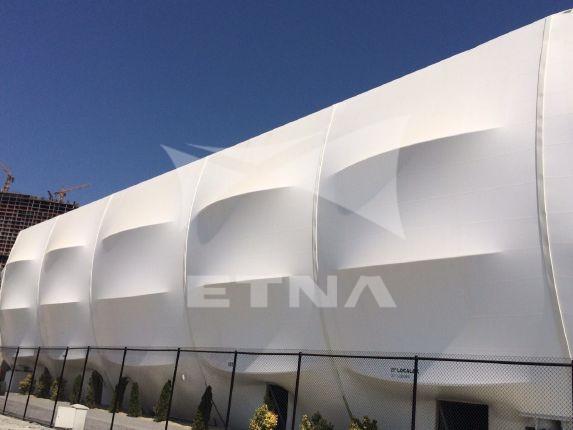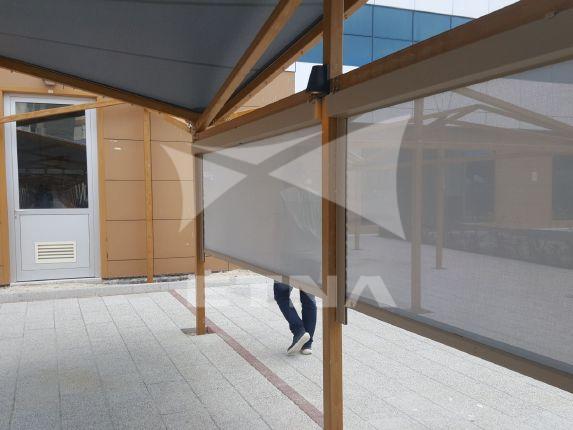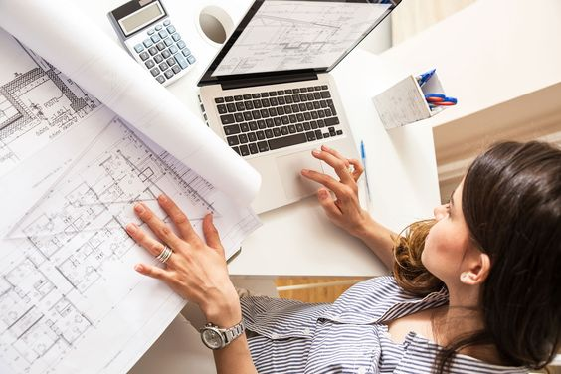Textile Facade
PVC/PTFE Membrane is the best solution for cladding building facades, either on large structures like stadiums, shopping mall or medium/small size projects like parking garages or office buildings. Tensile facades use the same technology as tensile fabric open air canopies or enclosed roofing utilizing PVC /PTFE / membrane mesh or ETFE film applications such as air inflated cushions or single layer with cables.

A highly sustainable building material for tensile facade cladding applications, tensile fabric membrane maximizes daylight while minimizing solar heat gain and transportation- and fabrication-related waste. With the PVC membranes available in many standard colors and with the ability for printed graphics, nearly any design is possible. A silver-colored mesh fabric is typically specified for a similar aesthetic to aluminum panels, but with greater transparency.


Benefits of Tensile Fabric Facades:
• Durable and sustainable
• Decrease Solar Heat Gain
• Flexible Design Aesthetics
• Long Span Capabilities
• Cost Effective Solutions
• Natural Light Translucency
• Air Ventilation with Mesh Fabrics
• Digital Printing Graphics available for PVC Membranes or ETFE film
• 100% recyclable* (depending on the type of membrane used)
• Non-combustible fabrics available
Advantages
Textile Facade is designed in accordance with environmental conditions by using any of the materials such as PVC, Mesh (Perforated), PTFE (Teflon) or PTFE mesh or ETFE or a combination.
Textile covering facades have many advantages:
1. Lightness: Since textile materials are generally light, the facade system does not add additional load to the building, which provides savings on carrier systems and foundations.
2. Flexibility and Design Variety: Textile covering facades can be designed in various shapes and forms, thus providing freedom to architects and designers. Flat, curved or wavy forms can be created.
3. Light Transmission: Such facades allow natural light to enter the interior spaces, which saves energy and creates a brighter interior environment.
4. Energy Efficiency: Textile facades help reduce the heating and cooling costs of buildings by providing insulation and shading. It also filters sunlight and controls the entry of solar heat into the building.
5. Durability and Weather Resistance: Textile materials are resistant to UV rays, water, wind and other weather conditions. A long-lasting facade system can be achieved with the right materials.
6. Fast and Easy Installation: Installation of textile facades is generally faster and easier than other facade systems, which can reduce labor and installation costs.
7. Ease of Maintenance: Textile facades are generally made of easily cleanable materials and require minimal maintenance.
8. Environmentally Friendly Options: Many textile facade materials are recyclable or produced from materials with low environmental impacts.
These advantages make textile facades preferred as an aesthetic, functional and sustainable solution in architectural projects.
Textile facades have more advantages than metal mesh facade cladding. Here are the main reasons for these advantages:
1. Weight and Load Reduction
– Textile Facades: They are generally made of very light materials, which does not add additional load to the building. This lightness requires a less strong carrier system and reduces the overall costs of the structure.
– Metal Mesh Facades: They are heavier and can create more load on the structure. They may also require more durable load-bearing systems.
2. Flexibility and Design Variety
– Textile Facades: Thanks to their flexible structure, they can be easily designed and applied in various shapes, forms and patterns. This offers creative solutions to architects.
– Metal Mesh Facades: They are more rigid and have limited flexibility, which can limit design options.
3. Light Transmission and Indoor Comfort
– Textile Facades: They can optimize natural lighting in indoor spaces by using different density fabrics to provide light transmission. They control sunlight while also allowing some daylight to enter, thus saving energy.
– Metal Mesh Facades: Although they provide light transmission, they generally cannot manage light as flexibly as textile covers.
4. Insulation and Energy Efficiency
– Textile Facades: They can provide thermal insulation and reduce the heating and cooling costs of the building. In addition, with the ability to control sunlight, they can reduce cooling loads by limiting the entry of solar heat.
– Metal Mesh Facades: Provides shading but is less effective in providing thermal insulation.
5. Ease of Installation and Maintenance
– Textile Facades: Installation is usually faster and easier; they also require less labor due to their lightweight structure. Maintenance costs are also generally low, they do not rust and are easy to clean.
– Metal Mesh Facades: They can be more difficult to install, and may require more labor, especially for special shapes and large sizes. They may also require more maintenance due to the risk of metal rusting or discoloration.
6. Environmentally Friendly Options
– Textile Facades: They can be made from recyclable or low-impact materials, which provides an advantage in terms of sustainability.
– Metal Mesh Facades: Although recyclable, the production process can be energy intensive and create more environmental impact.
7. Aesthetic Variety
– Textile Facades: They offer more options in terms of color, texture and pattern. More diverse and dynamic surfaces can be created from an aesthetic perspective.
– Metal Mesh Facades: Although visually interesting, color and texture options are more limited and can offer a harsher appearance in terms of aesthetics.
For these reasons, textile facades may be more advantageous than metal mesh facades, depending on the project and design goals.


